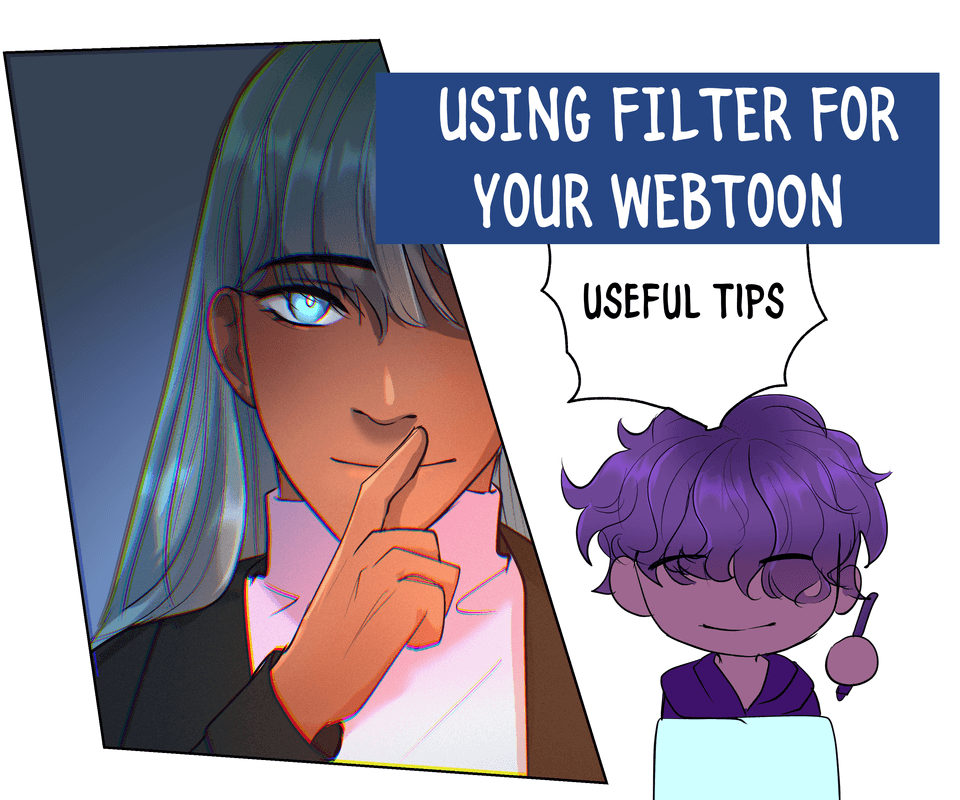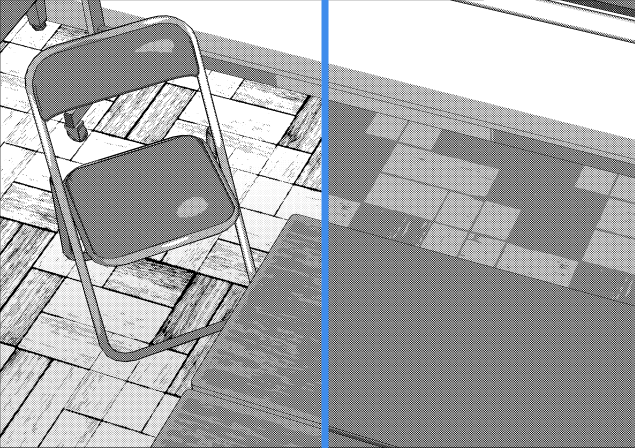STEP BY STEP FLAT ILLUSTRATIONS
In this tutorial we will learn how to make illustrations using flat colors, to obtain a graphic result without the use of soft gradients. With this technique you can achieve different results depending on your personal style, the following illustrations are some examples of the effects you can achieve, after learning the basics we will use the technique to make an illustration with more details
Line work or lineart
With our sketch prepared, we will make two types of lineart, one with the appearance of a free hand and the other with a more graphic aspect.
Ready the sketch layer with low opacity we are going to make the lineart on a layer above the sketch. We start with the most organic style, choose the sub tool/fine brush and begin to trace the lines of our illustration.
For the second style we create a new vector layer, start tracing our lines with the sub tool/marker and erase the excess with the sub tool/eraser with the erase to intersection checkbox selected, you only erase a small part of the excess line and it will be will remove leaving a clean finish
color application
Now that we have our lineart ready we will start coloring, first we will make a selection with the silhouette of our object or subject, we use the sub tool/automatic selection we click on the background and if our lineart has no openings the entire background should be selected except our main subject , in case there is an opening in this case in the middle of the cherry stems with the sub tool / automatic selection we press shift + left click to add that space to the selection
Now we go to the select tab - expand selected area - and add between 2 to 4 pixels, it will depend on how big your canvas is, we accept (this so that when coloring the silhouette there is no empty border inside the lineart)
We return to the select tab - invert selected area, and now we would have the silhouette of our drawing ready to color
In a lower layer than the lines we will place a base color
In layers above the base color we take the selection/lasso subtool and begin to freely select the different areas to color, apply the desired color with the subtool/fill and then in the layers panel select adjust to lower layer to maintain the color inside the silhouette that we created, and we do the same for the other colors in different layers
To give depth to our illustration with the sub tool / select lasso we select the areas to add color variations, a tip to keep in mind is to give a lighter tone to the objects that are closer to the viewer and a darker tone to the parts further away in this way we create different shades of color and values in different layers, each one above the tone that corresponds to it
Lights, shadows and texture
Following the same method with the sub tool / select lasso we will give highlights and shadows in the same way as before, on top of the base layer on the corresponding color, we will add various color variations and as many details as we want
To add texture we will use the scratch tone sub tool/airbrush, which will give us a gradient effect but with texture without removing the effect of flat colors
lineart coloring
This step is optional and will depend on the style of your illustration, we are going to color the lineart layer, we create a new layer with the option adjust lower layer activated on the lineart layer and freehand we color the lines with the colors you choose. And with this same method we will add color to the drawing of the banana, here you can see the different effects depending on the color of the lines
We use these steps to make a more complex illustration
Following all these steps now we will create an illustration with more details, the method to use will be the same, we will start with the sketch and in this case I will make the lineart with the sub tool/marker on a vector layer
With the lineart ready we will select all the parts of our illustration to place the base colors. In case you have too many details or overlapping images, you can separate different parts of your illustration in a layer folder
To give the color variations and some shadows we will use the lasso subtool/selection and we will color the areas to which we want to add lighter or darker colors.
With our shadows applied it is time to add texture for that we will use the previous technique of the airbrush/scratch tone, we will also make line textures using the thin brush tool and the marker, at this stage you decide the amount of detail just remember to keep a look flat and avoid making very noticeable soft fades
The image could be your finished illustration but in this case I'm going to color the lines with different shades of color and I'll still show you the different finishes you can achieve
I hope this tutorial will be useful for you to create your flat illustrations, thanks for your time, see you soon! :)












Comment